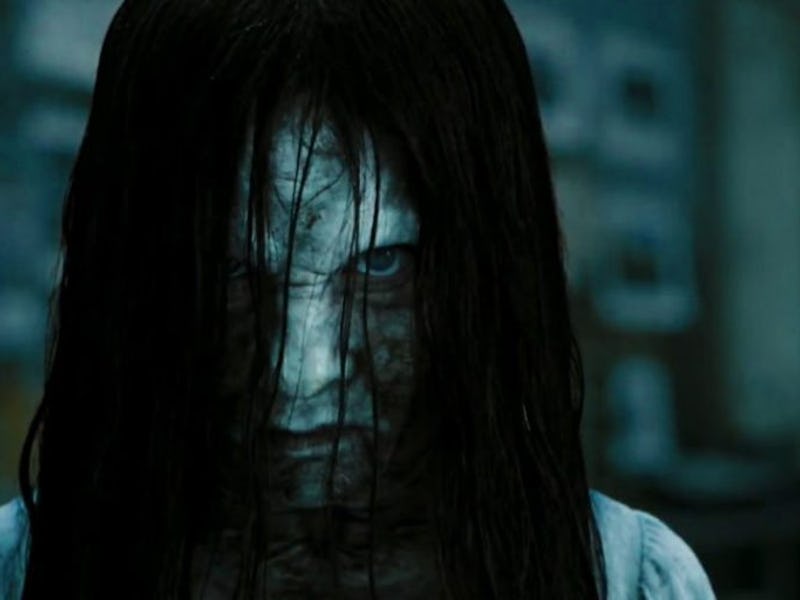Why 'The Ring' Sequel Had to Update From VHS to Viral Video
This time, Samara is climbing out of flatscreen TVs and laptops.

The scariest part about the Ring series is now obsolete. Previously, the franchise’s mainstay was the vehicle for its mayhem, a crumby old VHS tape that, when viewed, leads to one’s murder. But no one uses VCRs anymore, so Spanish filmmaker F. Javier Gutierrez had to find a new delivery system for the haunting destruction. And in Rings, the new sequel out on Friday, he found the modern day equivalent: viral videos.
Gutierrez chatted with Inverse about updating the technology of the franchise without losing what made the originals effective, the influence of Spanish surrealist auteur Luis Buñuel on the film, and making strong female characters in horror movies.
Why did you want Rings to be your first English-language film?
I go with the flow and make decisions by following my instinct. I was working on a new version of The Crow for I don’t know how long, and we got bogged down by delays. In the middle of that process I got a call from the producers of the Ring franchise, and they loved the darkness of my previous movie, Before the Fall. They knew The Crow was slow going, and asked me if I was interested to be part of a new Ring movie, so I joined.
Did you have any reservations in taking over the franchise 15 years after the American original and 12 years after the sequel?
There’s a responsibility and pressure about it. But because I was developing The Crow, I was used to it and didn’t really feel it. I love Ringu [the Japanese original] and Gore Verbinski’s Ring movie and wanted to follow them. I didn’t worry about where the next one falls in the timeline. The chance to be able to play with an iconic character like Samara was something risky, but there was great potential there.
What stood out about the original Japanese and American versions of The Ring to you?
The core idea of the Ring movies is that video, the one with the surreal elements to them before you get a call. You could understand the sophistication and surrealist links with those two originals. It was like the fucked up worlds of a filmmaker like Luis Buñuel. I grew up surrounded by museums in Madrid so I love art and the surrealism of painters like Dali. There’s disturbing imaginary images in their work that effect you subconsciously. So I was excited to try as much as possible to go into the world of The Ring and play with symbology and those elements.
What Bunuel movies were you inspired by for Rings?
There’s so many iconic images I grew up with in Spain. Imagine being five years old, turning the TV on, and seeing that image of a knife cutting an eye from Un Chien Andalou. You freak out! The dark cinematography and images of the little ants from that movie are also something I played with. It all comes from growing up in a dictatorship in Spain and being surrounded by images like that. But with Rings I knew we were thinking about a Hollywood movie that couldn’t go too far into hardcore disturbing surrealism that you’d be able to do in independent European films like Buñuel.
Why show Samara’s backstory? Do you think that kind of ruins the mystery?
The movie needed to work for a new generation. It couldn’t be just a nostalgic thing for people who grew up watching The Ring. So I embraced the idea of doing something that was through the eyes of a new cast but retained the core elements of a Ring movie. The core idea that got lost in the sequel was Samara’s story. So we wanted to frame it like a classic horror mystery that gave fans a new piece of the puzzle but also frame it for a new audience.
'Rings' director F. Javier Gutiérrez.
How do you see the technology of the Ring as relevant today going from a VHS tape to a digital video?
It was a tricky balance to figure out. The idea of a viral video could get crazy out of hand in a Ring story. We wanted something of that, but we didn’t want to forget to preserve the classic mystery of the tape. So I insisted we start the movie with the tape, but then it quickly gets turned into a digital format. There had to be laptops and flatscreen TVs with Samara crawling out of them to preserve that iconography.
Actress Matilda Lutz in 'Rings.'
Matilda Lutz’s main character Julia is a strong lead. Did you talk to her about being more than just a horror movie scream queen?
It’s difficult to get there. Matilda has a beautiful fragility about her. But especially in a movie like this one, the character has to be the one pushing forward. In a deleted scene, we gave her a backstory that showed she was a girl who’s alone with her mother, but she’s in charge of everything. She had to be a sensitive person who learns to deal with her difficult life. But even in the movie, we wanted her to somehow relate to Samara and empathize with the suffering of this iconic monster.
This interview has been edited for brevity and clarity.